International
FTE APEX Virtual Expo 2021 highlights – Leadership perspectives on “Relaunching global air transport”
The following article was published by Future Travel Experience
A round-up of the FTE APEX Virtual Expo 2021 live show days, which brought together the air transport industry’s most forward-thinking companies. This week, Future Travel Experience (FTE)…
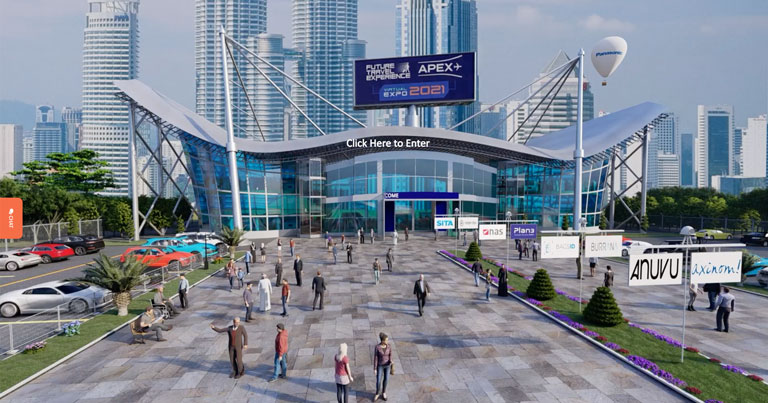
The following article was published by Future Travel Experience
A round-up of the FTE APEX Virtual Expo 2021 live show days, which brought together the air transport industry’s most forward-thinking companies.
This week, Future Travel Experience (FTE) and the Airline Passenger Experience Association (APEX) jointly delivered FTE APEX Virtual Expo 2021 – the air transport industry’s most comprehensive global gathering of the year, which attracted registrations from 189 airlines and 173 airports during the two live days on 25 and 26 May. Attendees were able to enjoy a plethora of content across the three virtual conference stages, as well as a live exhibition and an abundance of networking opportunities.
While the live show days have now ended, the virtual event platform will remain open until 25 June, so attendees can continue to access the portal at any hour of the day to watch conference presentations and supplier pitch sessions, and revisit the exhibition hall to learn all about the products and services that can help them thrive in the post-COVID-19 world.
The event, for which Panasonic Avionics is a Diamond Sponsor, was packed with exclusive announcements in the conference and exhibition, as well as panel discussions and keynotes from the biggest names in the industry, all in keeping with the “Relaunching Global Air Transport” theme. Here we provide a selection of the main highlights from the live portion of the event:
End-to-end solutions from 40+ industry suppliers

The free-to-attend virtual exhibition was at the epicentre of the show, enabling 42 industry suppliers, including household names and the most innovative startups and scaleups, to showcase their products, services and solutions in a dynamic virtual environment. This year, Virtual Expo brought together an even wider mix of exhibitors to reflect the changing nature of the industry – from companies focusing on digital transformation and customer experience enhancements to commercial innovation and health, safety and biosecurity specialists. Solutions on display in the virtual expo range from touchless tech and digital health passports to artificial intelligence (AI) baggage identification and new inflight entertainment and connectivity (IFEC) tools.
Airport-focused tech – touchless kiosks, digital health passports and AI baggage identification

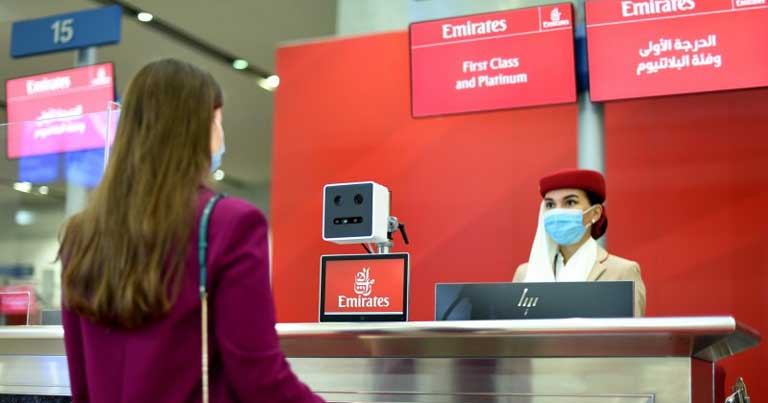

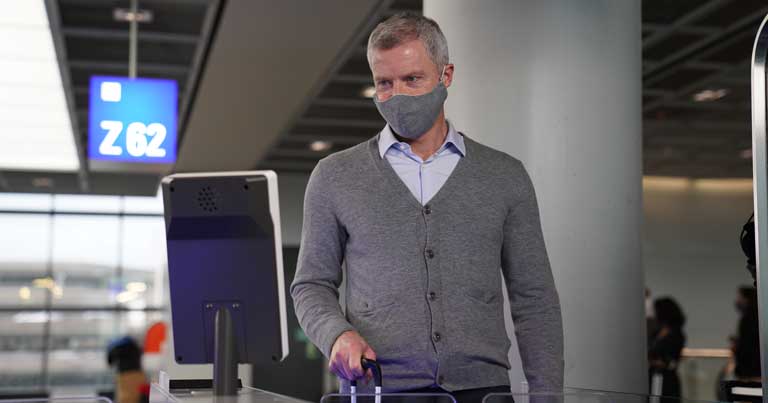
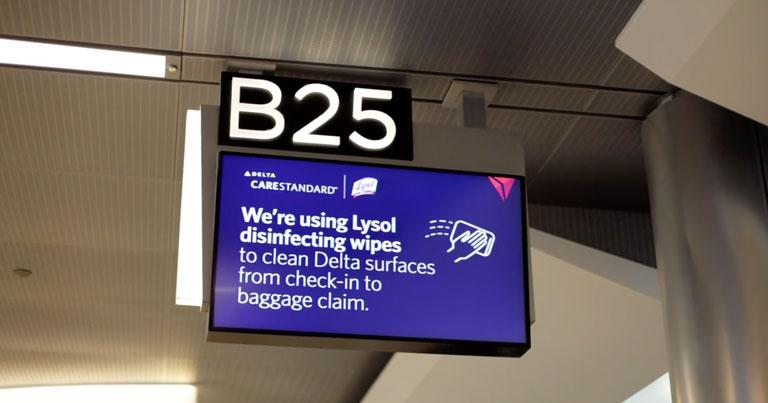

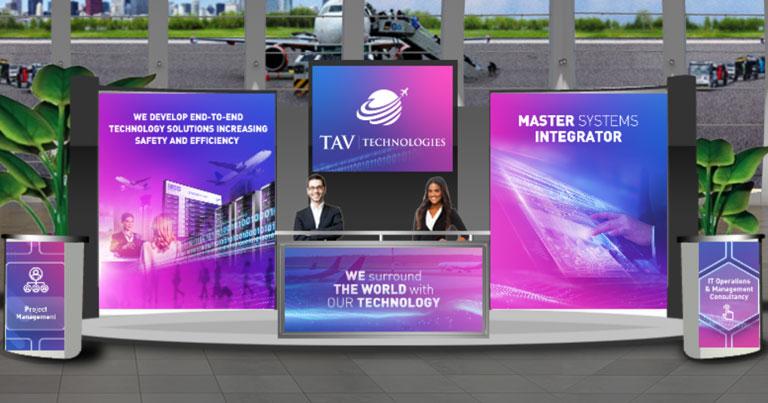
Among the exhibitors showcasing their latest solutions designed to enhance the passenger experience on the ground are NEC, National Aviation Services (NAS), SITA, Vision-Box, BagsID Network, Omnevo, CarTrawler, Elevation Software, TAV Technologies, Reckitt, Regula and more.
The focus is largely on creating contactless and touchless travel experiences through technology such as biometrics, robotics and self-service, while providing a safe and sanitised passenger journey.
Among the highlights is NAS’ digital vaccine passport, introduced earlier this year to facilitate travel through Kuwait. The COVID-19 Vaccine Certificate is linked to the Kuwait MOH vaccine records enabling passengers to view or share them where required. This contactless method has been designed to ensure faster processing and hassle-free travel for all passengers as well as airport and airline authorities.
Meanwhile, BagsID is showcasing its industry-disrupting smart baggage handling solution, which combines AI, deep learning and computer vision. The solution can detect individual bags by their unique physical characteristics (including scratches, dents and other features), using biometrics and photo recognition, and is a promising replacement for barcode and RFID.
At Vision-Box’s stand the focus is largely on its biometrics solutions, designed to create a seamless and touchless passenger experience. Visitors at the virtual booth have the opportunity to learn more about Vision-Box’s recent Single Token biometric project with Malaysia Airports Holdings Berhad, as well as Emirates’ integrated biometric path at Dubai International Airport (DXB).
The travel industry is changing, and the importance of hygiene is here to stay. This is strongly reflected on Reckitt’s booth – the hygiene conglomerate behind brands such as Dettol and Lysol. The company has recognised that customers are looking for trusted and familiar cleaning and disinfection products in these uncertain times, and for this reason it has partnered with some of the biggest airlines in the world, including Delta, British Airways and SAUDIA to provide disinfecting products such as wipes and hand gels from check-in to baggage and inflight.
Software company Plan3 also this week announced its new partnership with Icelandic startup airline PLAY. The carrier will be leaning on Plan3’s new passenger disruption tool, delivering an enhanced passenger experience to customers in the eye of disruption events.
Cutting-edge inflight digitalisation tools and aircraft interior innovations


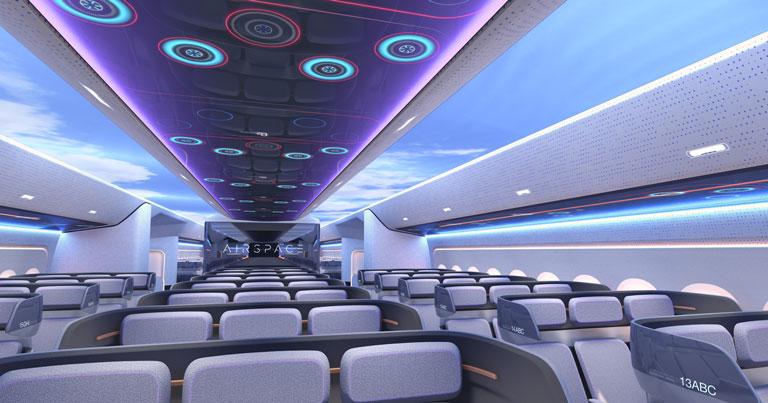

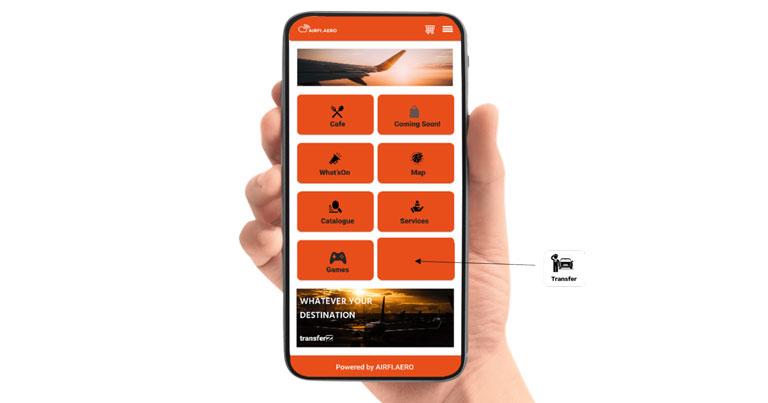



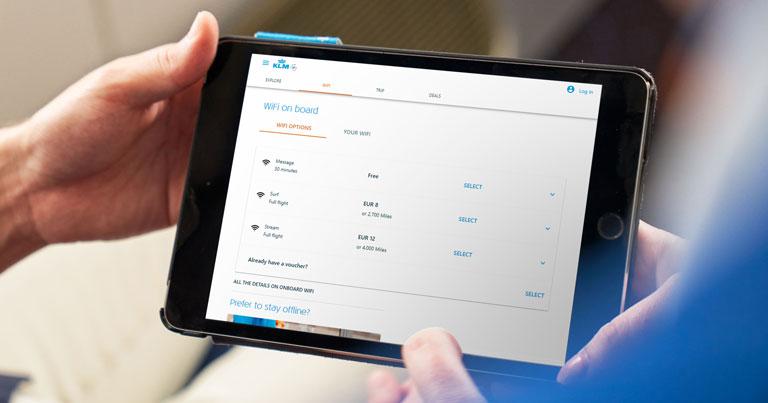

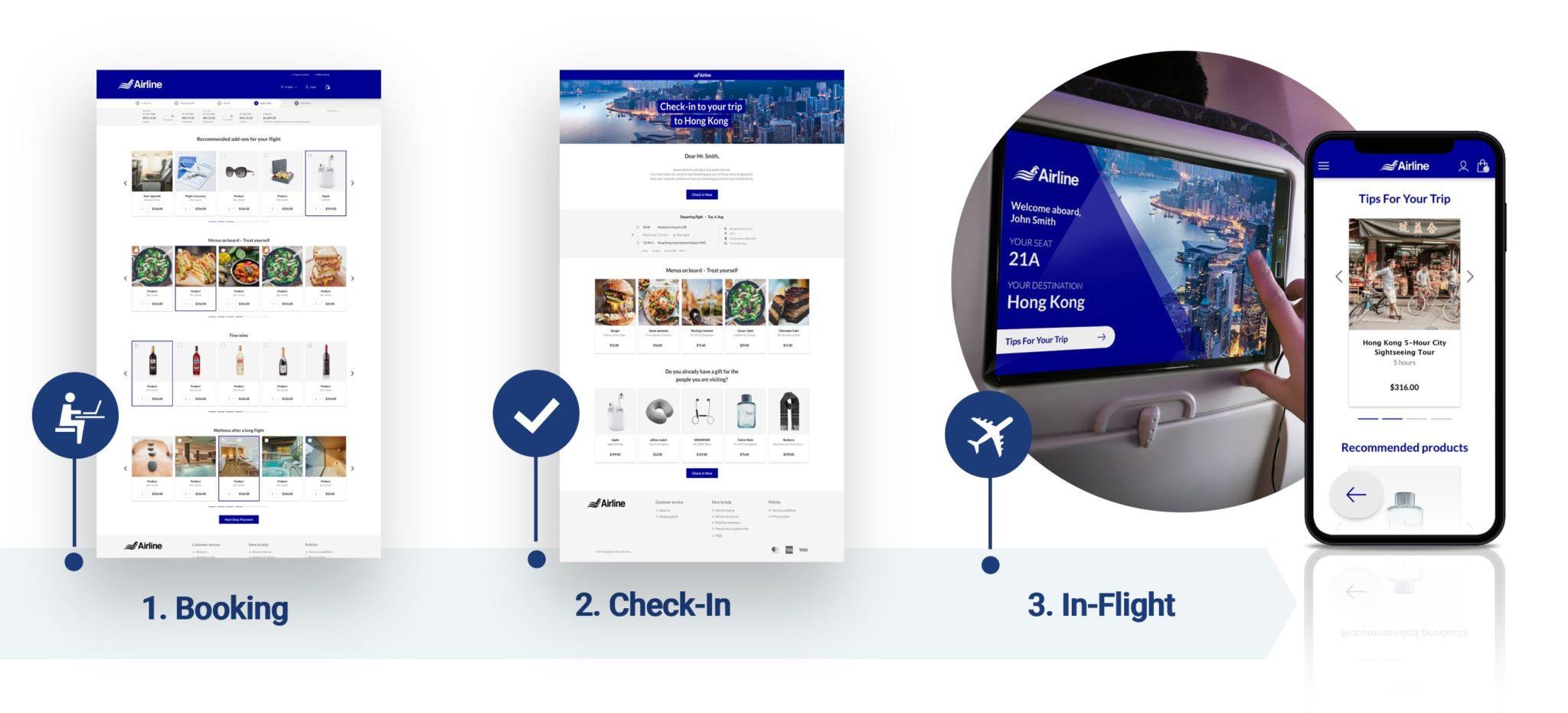
Also on display in the virtual exhibition is an impressive array of inflight focused products from companies including Anuvu, Axinom, Burrana, Omnevo, PXCom, Viasat, Astronics, Aerogroup, Airbus, AirFi.aero, Euronews, FORMIA, IFPL, KID-Systeme, Moment, Neutral Digital, Latécoère, PressReader and Spafax.
Previously known as Global Eagle, Anuvu used the live show days to unveil its new brand identity. The new brand reflects the company’s focus on next-generation passenger and guest connected experiences in the air and at sea. Josh Marks, Chief Executive Officer, shared: “Our new brand honours our extensive history but keeps the future in focus. This is more than a name change; our new brand and fresh visual identity highlight the innovative perspective we deliver to the mobility markets we serve.”
In other news, Astronics announced the launch of new anti-microbial aircraft in-seat power outlet units developed under its ongoing product innovation programme. The enhanced version of Astronics’ in-seat power outlet units will be developed using the latest technology to create an anti-microbial formulation, and will be available from Q3 2021.
Elsewhere, AirFi.aero announced its latest partnership with ground transport marketplace Transferz to develop an API and software developer kit that integrates the Transferz taxi booking engine into AirFi airline customers’ wireless IFE platforms. Passengers using the service can use their own mobile devices to reserve airport transfers to their final destination during the flight.
Viasat is also present at the expo, showcasing its advanced inflight connectivity system, which has recently been selected by JetBlue for its A220-300 and A321 Long Range aircraft, as well as Delta Air Lines for the carrier’s domestic mainline, narrow-body aircraft. Visitors at the show can also stop by PressReader’s booth to find out more about its recent partnerships with Qatar Airways and Etihad, which provide passengers with a large selection of digital publications inflight. Meanwhile, Airbus is promoting its Airspace cabin brand as well as various interiors innovations.
Axinom presented its innovative range of software products, as part of its Mosaic platform, that provides a seamless and automated way to choose, connect, and customise digital content supply-chain and workflow services. Mosaic is a unique platform that standardises all significant steps in the digital content workflows through independent yet connected services. The capabilities of Axinom Mosaic include automated workflows for the digital supply chain, content ingestion, encoding/transcoding with DRM, metadata management, user authentication, content synchronisation, secure multi-channel delivery to all types of end-user devices, and service orchestration and deployment. Additionally, at Axinom’s stand visitors can browse through the provider’s full protfolio of digital products focused on management, delivery, deployment and security of data, services and media content, enabling a variety of use cases such as seatback and wireless inflight entertainment (IFE), live TV, connectivity portals, crew services, and much more.
A showcase of new and emerging travel tech startups



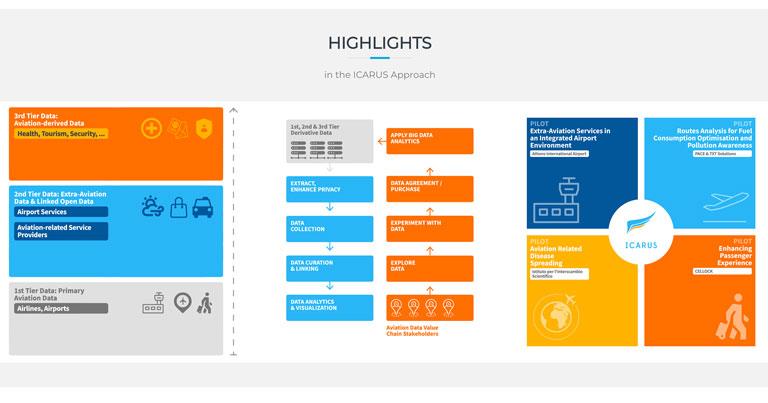

The virtual exhibition hall also features a showcase of some of the most pioneering startups in the travel tech space, including Origen Air, Aeroficial Intelligence, Fetcherr, ICARUS, UnDelay, and Global Travel Matters.
Origen Air is a smart, living, air purification company that filters microscopic pollutants, bacteria, and viruses for enterprises operating within public spaces. In the expo, the company is showcasing the Sentinel, a plant-based, zero waste, autonomous air purifier, which includes Origen Air’s genetically enhanced Golden Pothos Ivy, virus-killing UV-C light technology and an ultra-high-definition digital display. Through subscription services and digital ad revenues, the company supplies and maintains air purification hardware, software, and air quality data.
Aeroficial Intelligence came to Virtual Expo to showcase its Performance Cockpit data analytics solution, designed to increasing efficiency in air traffic management. The startup’s innovative products, services and solutions are provided to civil aviation authority, air navigation service provider, airport and airline customers.
ICARUS aims to deliver a novel framework and architecture that leverages data, primarily or secondarily related to the aviation industry, to help companies and organisations whose operations are directly or indirectly linked to aviation. The startup is presenting its recent project, co-funded by the European Commission, which leverages Big Data to provide numerous benefits to the industry.
US-based UnDelay has developed proprietary technology that converts hundreds of radio conversations into text simultaneously. With this data, airlines, airports and travel companies can find out if a flight will be delayed before that delay is reported.
Fetcherr is showcasing its ground-breaking new AI technology that tackles one of the biggest challenges for airlines – pricing and revenue management. Fetcherr has developed an AI-based demand prediction and continuous pricing system, that enables organisations to migrate to advanced continuous AI-based decision making.
Global Travel Matters is an aviation consulting company renowned for its management expertise and hands-on collaboration across a distinct number of operational disciplines. The company helps its clients to overcome a diverse set of challenges through ubiquitous problem-solving advice to specialised technical examination to improve their strategic positioning and financial efficiency.
Leadership perspectives on ‘Relaunching global air transport’

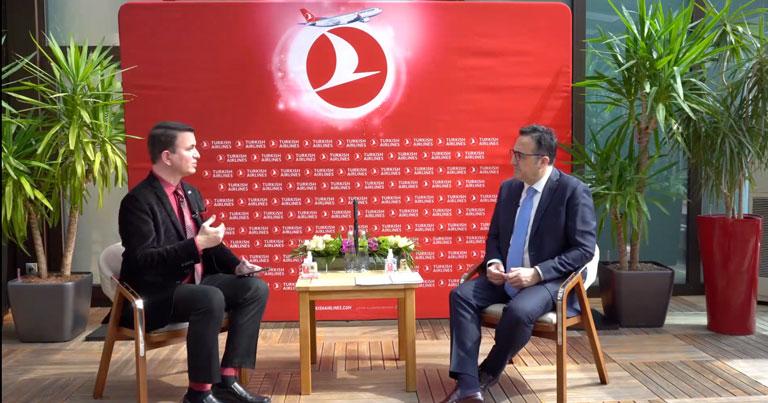

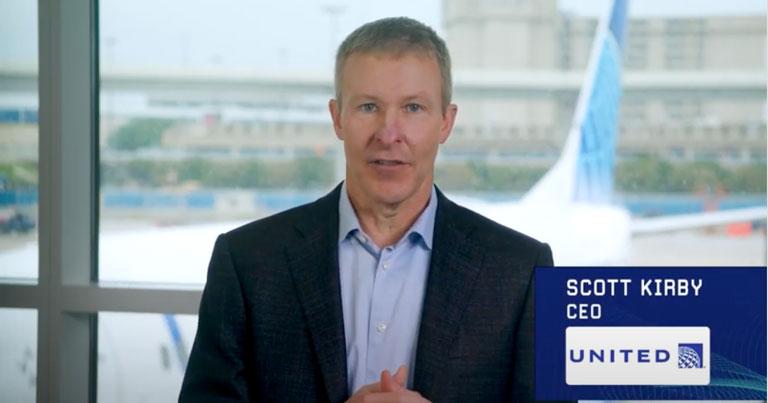
The event also featured an array of thought-provoking conference sessions. With over 140 speakers across the three conference stages, the event provided much-needed inspiration on the industry’s recovery efforts and the changing nature of the business.
The first day of the conference kicked off with an honest and fast-moving panel discussion, led by BBC World News Presenter Zeinab Badawi, with Luis Felipe de Oliveira, Director General, ACI World; Dr. Joe Leader, CEO, APEX/IFSA; and Rob Gurney, CEO, Oneworld. The panellists shared their views on the current state of the industry, covering the most pertinent topics such as quarantine measures, vaccinations and digital health passports. All three panellists agreed that digital health passports will be a key enabler to restarting travel. However, de Oliveira highlighted that interoperability with global government systems is crucial. Gurney added that the industry must quickly build a roadmap to create the functionality required to provide a trusted network between governments and the airline industry.
Throughout the show, attendees were able to hear candid ‘Fireside Chat’ interviews with the CEOs of some of the biggest airlines and airports in the world, including Turkish Airlines, Etihad, SAUDIA, WestJet and United Airlines. In a fascinating conversation with Dr. Joe Leader, CEO, APEX/IFSA, Turkish Airlines’ Chairman of the Board and Executive Committee, M. İlker Aycı reflected on a five-year period of significant growth pre-pandemic, the opportunities presented by the new Istanbul hub, health and safety measures, and the airline’s leadership in sustainability. He said: “We reshaped the entire process and passenger experience. Exemplary hygiene standards and safe travel measures give confidence to passengers, and they have responded very positively.”
Day 2 featured ‘Fireside Chats’ with Scott Kirby, CEO United Airlines, and Ed Sims, President & Chief Executive Officer, WestJet, conducted by Shashank Nigam, Founder & CEO, SimpliFlying. During the interview, Kirby highlighted that a transformation is taking place at the airline. “This is not your old United Airlines – nothing like it. We’re building something completely different to what people are used to experiencing, particularly at a network airline,” he explained. Kirby also shared United’s unique approach to sustainability, which he said is a big passion of his. He explained: “Carbon offsets cannot solve the problem. United has made a commitment to be 100% green and we are not going to use offsets. We’re going to get there through two big areas – sustainable aviation fuels and carbon sequestration.”
SAUDIA’s CEO Capt Ibrahim Koshy spoke about the lessons learned from the COVID-19 pandemic and how the carrier has gained confidence of customers and crew. “SAUDIA tried to gain the confidence of its passengers and crew by providing decontamination kits and PPE for the crew, and by introducing new cleaning protocols,” he shared. “We’ve invested in new technologies, such as HEPA filters and advanced UVC sterilisation technology onboard all of our aircraft. It has restored passenger confidence on our domestic flights.”
Auditorium conference sessions with topics ranging from diversity in aviation, digital health passports, biometrics, new approaches to inflight services, digital innovation, automation and robotics
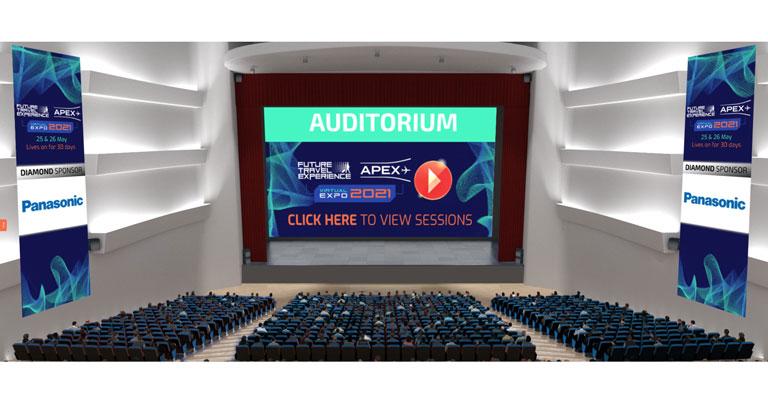
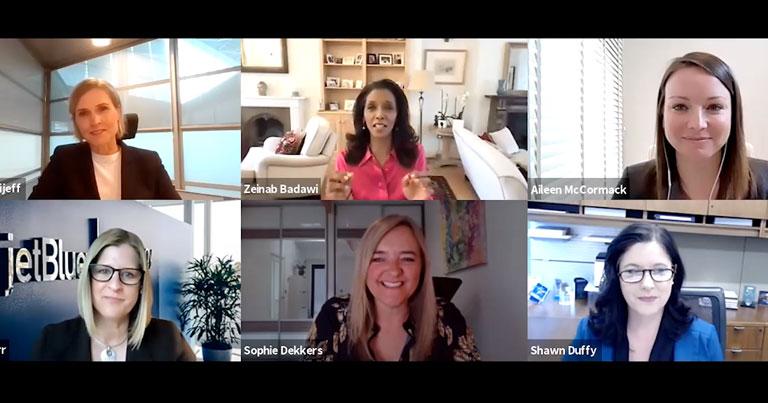
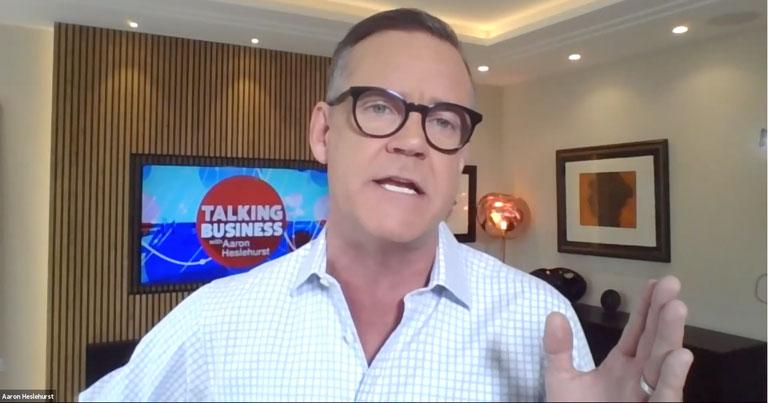
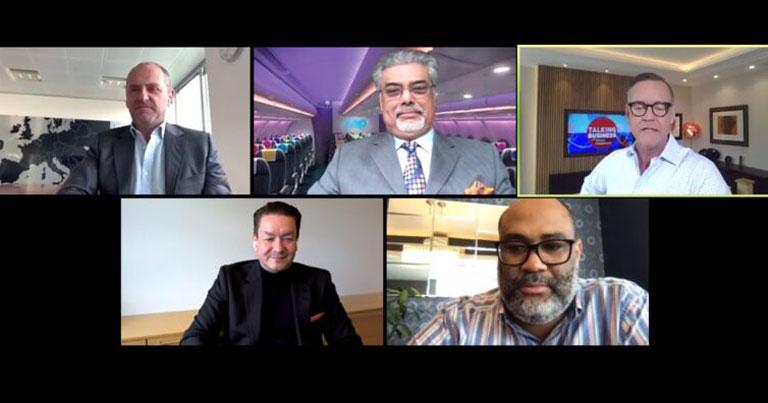

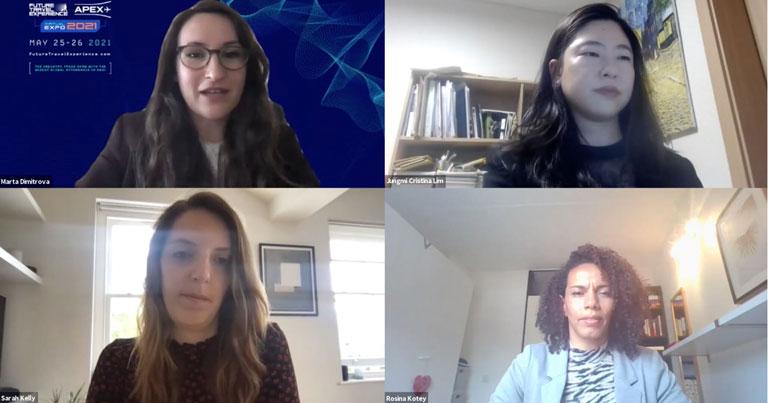
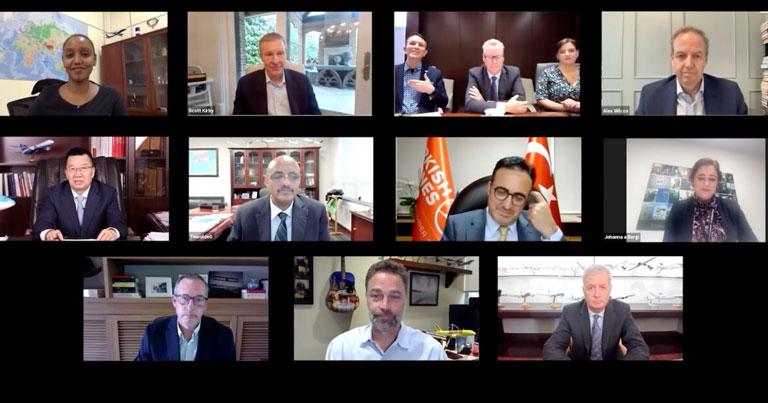
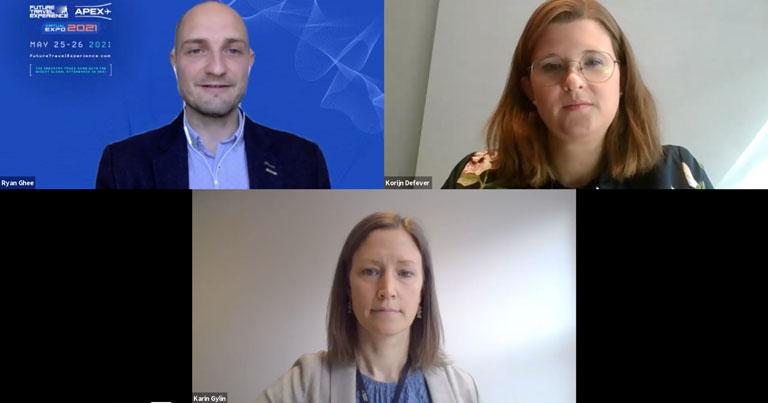
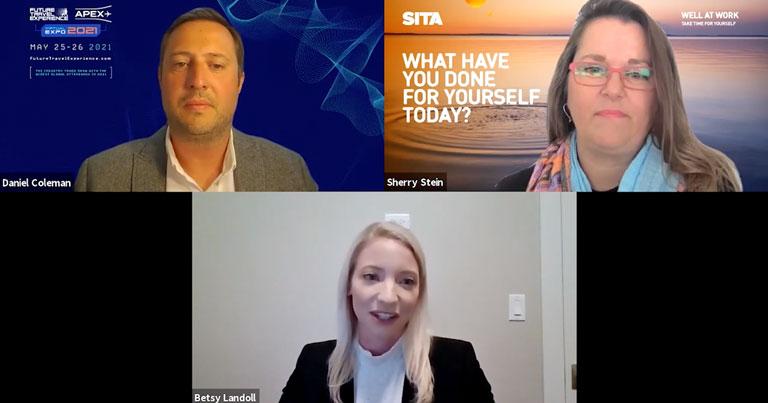
The Auditorium conference agenda was packed with unique features, including a Business Transformation Think Tank, New Airline C-Suite Summit, Transformation Honours List, Airport Automation Summit, Digital Health Passport Symposium, FTE APEX Women in Aviation Leadership Summit and APEX/IFSA Board of Governors broadcast.
The first-ever FTE APEX Women in Aviation Leadership Summit, sponsored by Viasat, took place on Day 2 of Virtual Expo. During this meaningful discussion Ulla Lettijeff, SVP – Helsinki Airport, Finavia; Sophie Dekkers, CCO, easyJet; Shawn Duffy, Senior Vice President & Chief Financial Officer, ViaSat; Amy Burr, Managing Director, Operations & Partnerships, JetBlue Technology Ventures; and Aileen McCormack, Chief Commercial Officer, CarTrawler, shared their perspectives on the impact female leaders are having in the industry, as well as insights into how air transport can achieve the fastest possible recovery.
The exclusive New Airline C-Suite Summit, moderated by Aaron Heslehurst, News Anchor & Presenter, BBC World News, featured the CEOs of four start-up airlines: Olivier Arrindell, CEO, Ava Airways; Matteo Bonecchi, CEO, EGO Airways; Birgir Jonsson, CEO, PLAY; and (Nino) Navdip Singh Judge, Chief Executive and Founder, Pop. In this high-energy session, the panellists discussed why now is a good time to start an airline and how they are planning to disrupt the market.
The FTE APEX Digital Health Passport Symposium, sponsored by National Aviation Services (NAS), was another highlight. The session brought together leaders from IATA, Lufthansa, Singapore Airlines, NAS, ID2020 and the Commons Project Foundation to discuss the challenges and questions around standards, interoperability, privacy and educating passengers before they can be deployed effectively by air transport stakeholders to help rebuild public confidence in travel.
In another Virtual Expo exclusive, the APEX/IFSA Board of Governors meeting was streamed during the show. This usually takes place behind closed doors, but this year the APEX/IFSA Board of Governors convened virtually at FTE APEX Virtual Expo to consider key industry priorities placed forward by the APEX Board of Directors and IFSA Board of Directors. The Board of Governors, consisting of CEOs from 13 global airlines, got together to decide on the airline industry advancement options for 2021. Each airline voted for two out of ten pre-selected areas of focus with Health Safety and Sustainability emerging as the key priorities for 2021.
Exclusive: The FTE APEX Business Model Transformation Think Tank – Phase 2: Turning Ideas into Reality
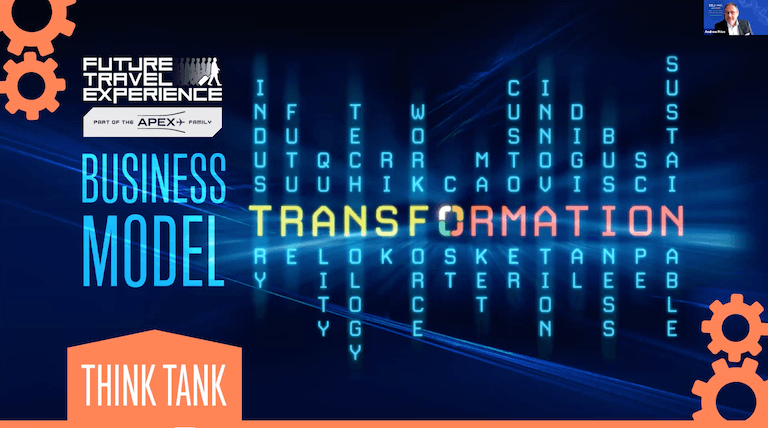
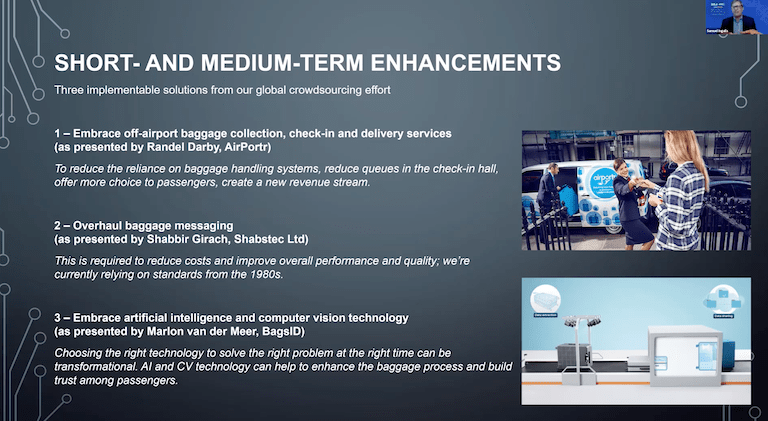
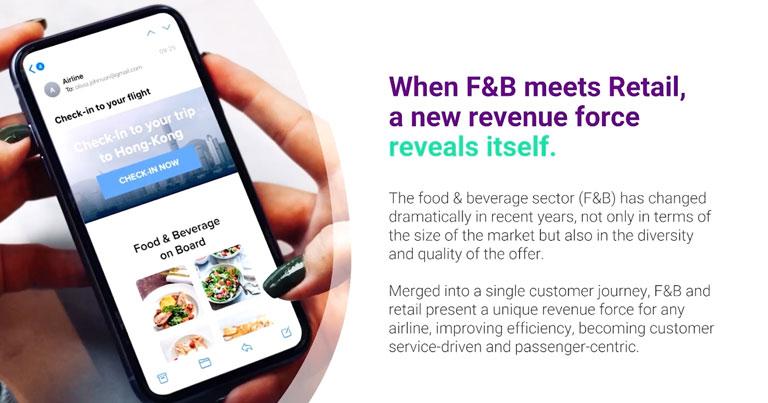
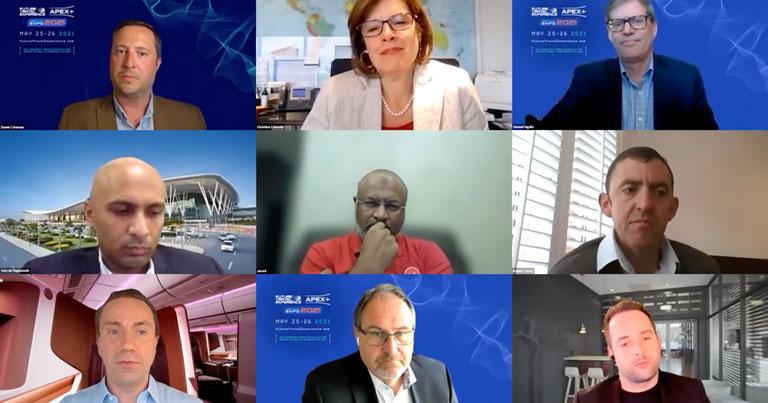
Another event highlight was Phase 2 of the FTE APEX Business Model Transformation Think Tank. The first phase of the Think Tank took place at the inaugural Virtual Expo last December, during which the working group identified two key areas of the travel experience that need improvement – the way passengers purchase and consume food & beverage (F&B), and providing passengers with a reliable and seamless end-to-end baggage experience. Following on from that progress, the Think Tank members reconvened this week at Virtual Expo 2021 to share the latest progress and further evolved thinking around these ideas.
Focusing on revolutionising the baggage experience were Andrew Price, Independent Consultant & Former Head of Global Baggage Operations, IATA and Samuel Ingalls, Principal, Barich, Inc, who shared three implementable solutions from a recent crowdsourcing effort: Embracing off-airport baggage collection and delivery services; overhauling baggage messaging; and embracing artificial intelligence and computer vision technology.
Additionally, presentations from the startups and disruptors who took part in the crowdsourcing effort are also available to watch in the OnDemand Speaker Zone.
The second part of the Think Tank focused on new approaches to F&B in travel, and building new e-commerce retail opportunities. Satyaki Raghunath, Chief Strategy & Development Officer, Bangalore International Airport Limited, shared BLR Airport’s efforts to partner with airlines to empower passengers to pre-order F&B services via airline/airport apps before the day of travel for collection at both departure or arrival airport. Later on in the session, Kian Gould, Chairman of the Board, Omnevo, provided a case study on how the new Omnevo platform can enhance the airport and inflight ancillary space. The session then continued onto a panel discussion with Think Tank members Juha Jarvinen, CCO, Virgin Atlantic & President Emeritus, APEX; Javed Malik, Group Chief Operations Officer, AirAsia; Christina Cassotis, CEO, Pittsburgh International Airport; and Robert Carey, former Chief Commercial Officer, easyJet.
OnDemand Speaker Zone – exclusive CEO and VP interviews with DFW Airport, Gatwick Airport, Western Sydney Airport, Scoot & Virgin Voyages

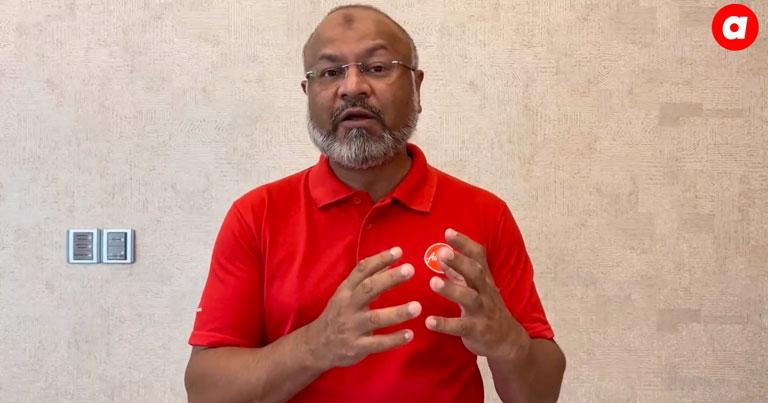
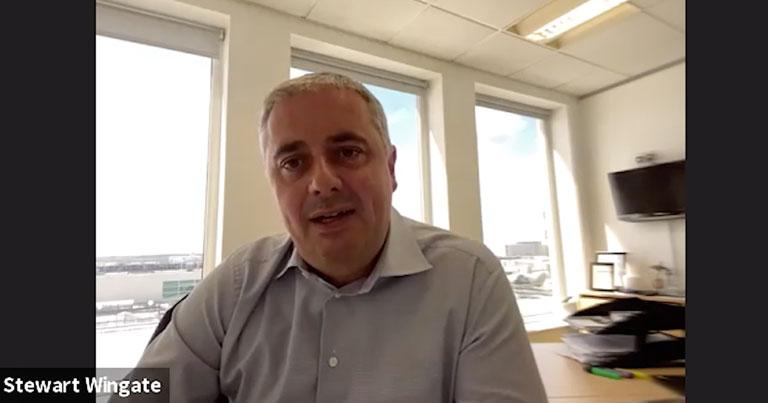
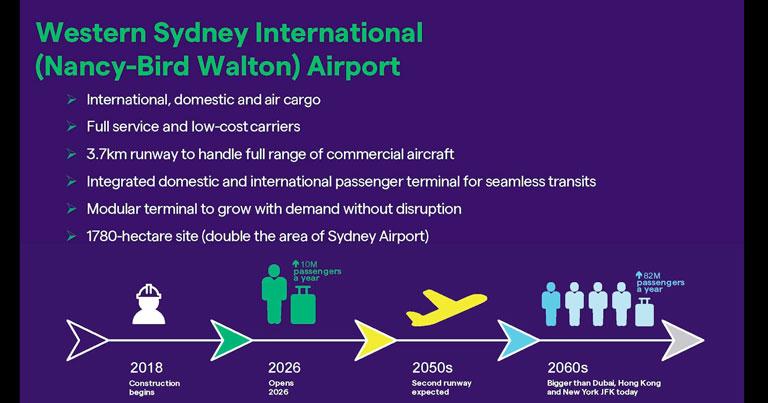


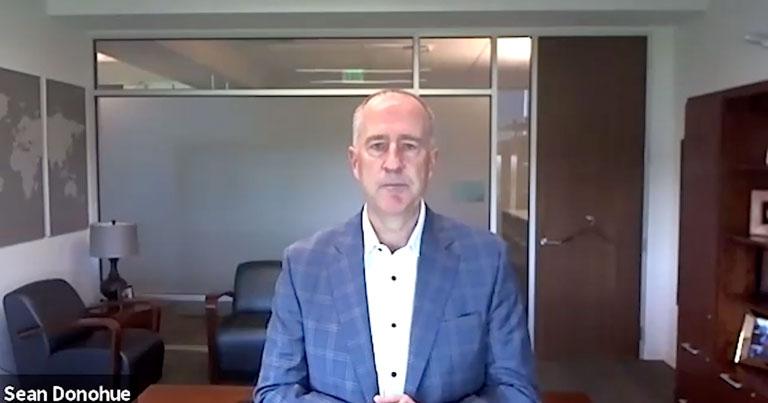
In addition to the Auditorium, the OnDemand Speaker Zone also provides a wealth of content to attendees with an array of pre-recorded presentations and interviews specially recorded for the show. Among the highlights are exclusive interviews with the CEOs of DFW Airport, Gatwick Airport, Western Sydney Airport and Scoot, the VP of e-Commerce at Virgin Voyages, as well as a Guest Session led by AirAsia.
Attendees can also catch-up on a series of innovation case studies from a number of companies including Lufthansa, U.S. Customs and Border Protection, Vision-Box, Burrana, Viasat, Axinom, Origen Air and many more.
In another FTE exclusive, AirAsia hosted a Guest Session, titled “Transformation and ‘Bringing it back better’”, in which a number of senior executives from across the business shared contributions on achieving the carrier’s vision to be “more than just an airline”.
Attendees can hear from Javed Malik, Group Chief Operations Officer, AirAsia; Lim Ben-Jie, Head of e-Commerce, AirAsia Super App; Pete Chareonwongsak, CEO, Teleport; and Liong Tien Ling, Chief Safety Officer, AirAsia on some of the recent initiatives that have been introduced, including the AirAsia Super App, logistics, e-commerce, fintech services, as well as new procedures and innovations such as biometric facial recognition which will not only make flying more hygienic and contactless, but will also uniquely support commerce ambitions going forward. The airline is also establishing teleport delivery and pilot training businesses leveraging drones, and its own air taxi business.
FTE Transformation Honours List recognises Turkish Airlines, LAWA, Star Alliance, CVG, HIA, JPA, AirFi.Aero & more
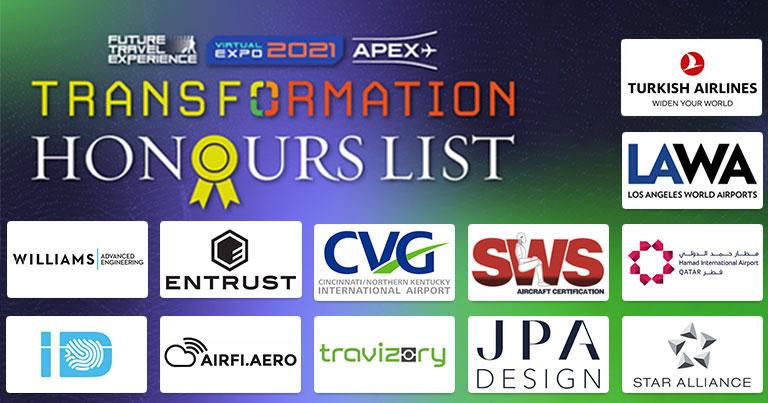
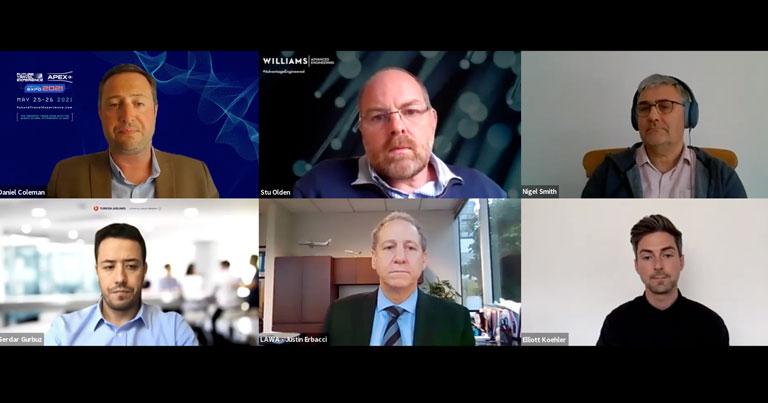
The final line-up of companies recognised in the FTE APEX Virtual Expo Transformation Honours List also had the opportunity to present their inspirational stories on how they have embraced innovation and transformation, and taken on a leadership role in helping to prepare the industry for a brighter future post-pandemic.
In the Auditorium, attendees can hear presentations from Turkish Airlines, Los Angeles World Airports, Williams Advanced Engineering, JPA Design and SWS Certification. While the OnDemand Speaker Zone hosts presentations from Cincinnati/Northern Kentucky International Airport, Hamad International Airport, Star Alliance, AirFi.aero, Scoot, Entrust, Identy, and Travizory. Read more about the finalists here.
Access free content at FTE APEX Virtual Expo 2021 until 25 June

There is still plenty of time to explore the Virtual Expo platform, as it remains open as a resource until 23:59 BST on 25th June 2021. Premium Pass holders can catch up on sessions from the Auditorium and OnDemand Speaker Zones, while a number of free-to-attend sessions are available in the Expo Conference. The exhibition hall also remains open and is free to access for all.
Article originally published here:
FTE APEX Virtual Expo 2021 highlights – Leadership perspectives on “Relaunching global air transport”
International
Riley Gaines Explains How Women’s Sports Are Rigged To Promote The Trans Agenda
Riley Gaines Explains How Women’s Sports Are Rigged To Promote The Trans Agenda
Is there a light forming when it comes to the long, dark and…

Is there a light forming when it comes to the long, dark and bewildering tunnel of social justice cultism? Global events have been so frenetic that many people might not remember, but only a couple years ago Big Tech companies and numerous governments were openly aligned in favor of mass censorship. Not just to prevent the public from investigating the facts surrounding the pandemic farce, but to silence anyone questioning the validity of woke concepts like trans ideology.
From 2020-2022 was the closest the west has come in a long time to a complete erasure of freedom of speech. Even today there are still countries and Europe and places like Canada or Australia that are charging forward with draconian speech laws. The phrase "radical speech" is starting to circulate within pro-censorship circles in reference to any platform where people are allowed to talk critically. What is radical speech? Basically, it's any discussion that runs contrary to the beliefs of the political left.
Open hatred of moderate or conservative ideals is perfectly acceptable, but don't ever shine a negative light on woke activism, or you might be a terrorist.
Riley Gaines has experienced this double standard first hand. She was even assaulted and taken hostage at an event in 2023 at San Francisco State University when leftists protester tried to trap her in a room and demanded she "pay them to let her go." Campus police allegedly witnessed the incident but charges were never filed and surveillance footage from the college was never released.
It's probably the last thing a champion female swimmer ever expects, but her head-on collision with the trans movement and the institutional conspiracy to push it on the public forced her to become a counter-culture voice of reason rather than just an athlete.
For years the independent media argued that no matter how much we expose the insanity of men posing as women to compete and dominate women's sports, nothing will really change until the real female athletes speak up and fight back. Riley Gaines and those like her represent that necessary rebellion and a desperately needed return to common sense and reason.
In a recent interview on the Joe Rogan Podcast, Gaines related some interesting information on the inner workings of the NCAA and the subversive schemes surrounding trans athletes. Not only were women participants essentially strong-armed by colleges and officials into quietly going along with the program, there was also a concerted propaganda effort. Competition ceremonies were rigged as vehicles for promoting trans athletes over everyone else.
The bottom line? The competitions didn't matter. The real women and their achievements didn't matter. The only thing that mattered to officials were the photo ops; dudes pretending to be chicks posing with awards for the gushing corporate media. The agenda took precedence.
Lia Thomas, formerly known as William Thomas, was more than an activist invading female sports, he was also apparently a science project fostered and protected by the athletic establishment. It's important to understand that the political left does not care about female athletes. They do not care about women's sports. They don't care about the integrity of the environments they co-opt. Their only goal is to identify viable platforms with social impact and take control of them. Women's sports are seen as a vehicle for public indoctrination, nothing more.
The reasons why they covet women's sports are varied, but a primary motive is the desire to assert the fallacy that men and women are "the same" psychologically as well as physically. They want the deconstruction of biological sex and identity as nothing more than "social constructs" subject to personal preference. If they can destroy what it means to be a man or a woman, they can destroy the very foundations of relationships, families and even procreation.
For now it seems as though the trans agenda is hitting a wall with much of the public aware of it and less afraid to criticize it. Social media companies might be able to silence some people, but they can't silence everyone. However, there is still a significant threat as the movement continues to target children through the public education system and women's sports are not out of the woods yet.
The ultimate solution is for women athletes around the world to organize and widely refuse to participate in any competitions in which biological men are allowed. The only way to save women's sports is for women to be willing to end them, at least until institutions that put doctrine ahead of logic are made irrelevant.
Government
Congress’ failure so far to deliver on promise of tens of billions in new research spending threatens America’s long-term economic competitiveness
A deal that avoided a shutdown also slashed spending for the National Science Foundation, putting it billions below a congressional target intended to…

Federal spending on fundamental scientific research is pivotal to America’s long-term economic competitiveness and growth. But less than two years after agreeing the U.S. needed to invest tens of billions of dollars more in basic research than it had been, Congress is already seriously scaling back its plans.
A package of funding bills recently passed by Congress and signed by President Joe Biden on March 9, 2024, cuts the current fiscal year budget for the National Science Foundation, America’s premier basic science research agency, by over 8% relative to last year. That puts the NSF’s current allocation US$6.6 billion below targets Congress set in 2022.
And the president’s budget blueprint for the next fiscal year, released on March 11, doesn’t look much better. Even assuming his request for the NSF is fully funded, it would still, based on my calculations, leave the agency a total of $15 billion behind the plan Congress laid out to help the U.S. keep up with countries such as China that are rapidly increasing their science budgets.
I am a sociologist who studies how research universities contribute to the public good. I’m also the executive director of the Institute for Research on Innovation and Science, a national university consortium whose members share data that helps us understand, explain and work to amplify those benefits.
Our data shows how underfunding basic research, especially in high-priority areas, poses a real threat to the United States’ role as a leader in critical technology areas, forestalls innovation and makes it harder to recruit the skilled workers that high-tech companies need to succeed.
A promised investment
Less than two years ago, in August 2022, university researchers like me had reason to celebrate.
Congress had just passed the bipartisan CHIPS and Science Act. The science part of the law promised one of the biggest federal investments in the National Science Foundation in its 74-year history.
The CHIPS act authorized US$81 billion for the agency, promised to double its budget by 2027 and directed it to “address societal, national, and geostrategic challenges for the benefit of all Americans” by investing in research.
But there was one very big snag. The money still has to be appropriated by Congress every year. Lawmakers haven’t been good at doing that recently. As lawmakers struggle to keep the lights on, fundamental research is quickly becoming a casualty of political dysfunction.
Research’s critical impact
That’s bad because fundamental research matters in more ways than you might expect.
For instance, the basic discoveries that made the COVID-19 vaccine possible stretch back to the early 1960s. Such research investments contribute to the health, wealth and well-being of society, support jobs and regional economies and are vital to the U.S. economy and national security.
Lagging research investment will hurt U.S. leadership in critical technologies such as artificial intelligence, advanced communications, clean energy and biotechnology. Less support means less new research work gets done, fewer new researchers are trained and important new discoveries are made elsewhere.
But disrupting federal research funding also directly affects people’s jobs, lives and the economy.
Businesses nationwide thrive by selling the goods and services – everything from pipettes and biological specimens to notebooks and plane tickets – that are necessary for research. Those vendors include high-tech startups, manufacturers, contractors and even Main Street businesses like your local hardware store. They employ your neighbors and friends and contribute to the economic health of your hometown and the nation.
Nearly a third of the $10 billion in federal research funds that 26 of the universities in our consortium used in 2022 directly supported U.S. employers, including:
A Detroit welding shop that sells gases many labs use in experiments funded by the National Institutes of Health, National Science Foundation, Department of Defense and Department of Energy.
A Dallas-based construction company that is building an advanced vaccine and drug development facility paid for by the Department of Health and Human Services.
More than a dozen Utah businesses, including surveyors, engineers and construction and trucking companies, working on a Department of Energy project to develop breakthroughs in geothermal energy.
When Congress shortchanges basic research, it also damages businesses like these and people you might not usually associate with academic science and engineering. Construction and manufacturing companies earn more than $2 billion each year from federally funded research done by our consortium’s members.

Jobs and innovation
Disrupting or decreasing research funding also slows the flow of STEM – science, technology, engineering and math – talent from universities to American businesses. Highly trained people are essential to corporate innovation and to U.S. leadership in key fields, such as AI, where companies depend on hiring to secure research expertise.
In 2022, federal research grants paid wages for about 122,500 people at universities that shared data with my institute. More than half of them were students or trainees. Our data shows that they go on to many types of jobs but are particularly important for leading tech companies such as Google, Amazon, Apple, Facebook and Intel.
That same data lets me estimate that over 300,000 people who worked at U.S. universities in 2022 were paid by federal research funds. Threats to federal research investments put academic jobs at risk. They also hurt private sector innovation because even the most successful companies need to hire people with expert research skills. Most people learn those skills by working on university research projects, and most of those projects are federally funded.
High stakes
If Congress doesn’t move to fund fundamental science research to meet CHIPS and Science Act targets – and make up for the $11.6 billion it’s already behind schedule – the long-term consequences for American competitiveness could be serious.
Over time, companies would see fewer skilled job candidates, and academic and corporate researchers would produce fewer discoveries. Fewer high-tech startups would mean slower economic growth. America would become less competitive in the age of AI. This would turn one of the fears that led lawmakers to pass the CHIPS and Science Act into a reality.
Ultimately, it’s up to lawmakers to decide whether to fulfill their promise to invest more in the research that supports jobs across the economy and in American innovation, competitiveness and economic growth. So far, that promise is looking pretty fragile.
This is an updated version of an article originally published on Jan. 16, 2024.
Jason Owen-Smith receives research support from the National Science Foundation, the National Institutes of Health, the Alfred P. Sloan Foundation and Wellcome Leap.
economic growth covid-19 grants congress vaccine chinaInternational
What’s Driving Industrial Development in the Southwest U.S.
The post-COVID-19 pandemic pipeline, supply imbalances, investment and construction challenges: these are just a few of the topics address by a powerhouse…

The post-COVID-19 pandemic pipeline, supply imbalances, investment and construction challenges: these are just a few of the topics address by a powerhouse panel of executives in industrial real estate this week at NAIOP’s I.CON West in Long Beach, California. Led by Dawn McCombs, principal and Denver lead industrial specialist for Avison Young, the panel tackled some of the biggest issues facing the sector in the Western U.S.
Starting with the pandemic in 2020 and continuing through 2022, McCombs said, the industrial sector experienced a huge surge in demand, resulting in historic vacancies, rent growth and record deliveries. Operating fundamentals began to normalize in 2023 and construction starts declined, certainly impacting vacancy and absorption moving forward.
“Development starts dropped by 65% year-over-year across the U.S. last year. In Q4, we were down 25% from pre-COVID norms,” began Megan Creecy-Herman, president, U.S. West Region, Prologis, noting that all of that is setting us up to see an improvement of fundamentals in the market. “U.S. vacancy ended 2023 at about 5%, which is very healthy.”
Vacancies are expected to grow in Q1 and Q2, peaking mid-year at around 7%. Creecy-Herman expects to see an increase in absorption as customers begin to have confidence in the economy, and everyone gets some certainty on what the Fed does with interest rates.
“It’s an interesting dynamic to see such a great increase in rents, which have almost doubled in some markets,” said Reon Roski, CEO, Majestic Realty Co. “It’s healthy to see a slowing down… before [rents] go back up.”
Pre-pandemic, a lot of markets were used to 4-5% vacancy, said Brooke Birtcher Gustafson, fifth-generation president of Birtcher Development. “Everyone was a little tepid about where things are headed with a mediocre outlook for 2024, but much of this is normalizing in the Southwest markets.”
McCombs asked the panel where their companies found themselves in the construction pipeline when the Fed raised rates in 2022.
In Salt Lake City, said Angela Eldredge, chief operations officer at Price Real Estate, there is a typical 12-18-month lead time on construction materials. “As rates started to rise in 2022, lots of permits had already been pulled and construction starts were beginning, so those project deliveries were in fall 2023. [The slowdown] was good for our market because it kept rates high, vacancies lower and helped normalize the market to a healthy pace.”
A supply imbalance can stress any market, and Gustafson joked that the current imbalance reminded her of a favorite quote from the movie Super Troopers: “Desperation is a stinky cologne.” “We’re all still a little crazed where this imbalance has put us, but for the patient investor and owner, there will be a rebalancing and opportunity for the good quality real estate to pass the sniff test,” she said.
At Bircher, Gustafson said that mid-pandemic, there were predictions that one billion square feet of new product would be required to meet tenant demand, e-commerce growth and safety stock. That transition opened a great opportunity for investors to run at the goal. “In California, the entitlement process is lengthy, around 24-36 months to get from the start of an acquisition to the completion of a building,” she said. Fast forward to 2023-2024, a lot of what is being delivered in 2024 is the result of that chase.
“Being an optimistic developer, there is good news. The supply imbalance helped normalize what was an unsustainable surge in rents and land values,” she said. “It allowed corporate heads of real estate to proactively evaluate growth opportunities, opened the door for contrarian investors to land bank as values drop, and provided tenants with options as there is more product. Investment goals and strategies have shifted, and that’s created opportunity for buyers.”
“Developers only know how to run and develop as much as we can,” said Roski. “There are certain times in cycles that we are forced to slow down, which is a good thing. In the last few years, Majestic has delivered 12-14 million square feet, and this year we are developing 6-8 million square feet. It’s all part of the cycle.”
Creecy-Herman noted that compared to the other asset classes and opportunities out there, including office and multifamily, industrial remains much more attractive for investment. “That was absolutely one of the things that underpinned the amount of investment we saw in a relatively short time period,” she said.
Market rent growth across Los Angeles, Inland Empire and Orange County moved up more than 100% in a 24-month period. That created opportunities for landlords to flexible as they’re filling up their buildings. “Normalizing can be uncomfortable especially after that kind of historic high, but at the same time it’s setting us up for strong years ahead,” she said.
Issues that owners and landlords are facing with not as much movement in the market is driving a change in strategy, noted Gustafson. “Comps are all over the place,” she said. “You have to dive deep into every single deal that is done to understand it and how investment strategies are changing.”
Tenants experienced a variety of challenges in the pandemic years, from supply chain to labor shortages on the negative side, to increased demand for products on the positive, McCombs noted.
“Prologis has about 6,700 customers around the world, from small to large, and the universal lesson [from the pandemic] is taking a more conservative posture on inventories,” Creecy-Herman said. “Customers are beefing up inventories, and that conservatism in the supply chain is a lesson learned that’s going to stick with us for a long time.” She noted that the company has plenty of clients who want to take more space but are waiting on more certainty from the broader economy.
“E-commerce grew by 8% last year, and we think that’s going to accelerate to 10% this year. This is still less than 25% of all retail sales, so the acceleration we’re going to see in e-commerce… is going to drive the business forward for a long time,” she said.
Roski noted that customers continually re-evaluate their warehouse locations, expanding during the pandemic and now consolidating but staying within one delivery day of vast consumer bases.
“This is a generational change,” said Creecy-Herman. “Millions of young consumers have one-day delivery as a baseline for their shopping experience. Think of what this means for our business long term to help our customers meet these expectations.”
McCombs asked the panelists what kind of leasing activity they are experiencing as a return to normalcy is expected in 2024.
“During the pandemic, shifts in the ports and supply chain created a build up along the Mexican border,” said Roski, noting border towns’ importance to increased manufacturing in Mexico. A shift of populations out of California and into Arizona, Nevada, Texas and Florida have resulted in an expansion of warehouses in those markets.
Eldridge said that Salt Lake City’s “sweet spot” is 100-200 million square feet, noting that the market is best described as a mid-box distribution hub that is close to California and Midwest markets. “Our location opens up the entire U.S. to our market, and it’s continuing to grow,” she said.
The recent supply chain and West Coast port clogs prompted significant investment in nearshoring and port improvements. “Ports are always changing,” said Roski, listing a looming strike at East Coast ports, challenges with pirates in the Suez Canal, and water issues in the Panama Canal. “Companies used to fix on one port and that’s where they’d bring in their imports, but now see they need to be [bring product] in a couple of places.”
“Laredo, [Texas,] is one of the largest ports in the U.S., and there’s no water. It’s trucks coming across the border. Companies have learned to be nimble and not focused on one area,” she said.
“All of the markets in the southwest are becoming more interconnected and interdependent than they were previously,” Creecy-Herman said. “In Southern California, there are 10 markets within 500 miles with over 25 million consumers who spend, on average, 10% more than typical U.S. consumers.” Combined with the port complex, those fundamentals aren’t changing. Creecy-Herman noted that it’s less of a California exodus than it is a complementary strategy where customers are taking space in other markets as they grow. In the last 10 years, she noted there has been significant maturation of markets such as Las Vegas and Phoenix. As they’ve become more diversified, customers want to have a presence there.
In the last decade, Gustafson said, the consumer base has shifted. Tenants continue to change strategies to adapt, such as hub-and-spoke approaches. From an investment perspective, she said that strategies change weekly in response to market dynamics that are unprecedented.
McCombs said that construction challenges and utility constraints have been compounded by increased demand for water and power.
“Those are big issues from the beginning when we’re deciding on whether to buy the dirt, and another decision during construction,” Roski said. “In some markets, we order transformers more than a year before they are needed. Otherwise, the time comes [to use them] and we can’t get them. It’s a new dynamic of how leases are structured because it’s something that’s out of our control.” She noted that it’s becoming a bigger issue with electrification of cars, trucks and real estate, and the U.S. power grid is not prepared to handle it.
Salt Lake City’s land constraints play a role in site selection, said Eldridge. “Land values of areas near water are skyrocketing.”
The panelists agreed that a favorable outlook is ahead for 2024, and today’s rebalancing will drive a healthy industry in the future as demand and rates return to normalized levels, creating opportunities for investors, developers and tenants.
This post is brought to you by JLL, the social media and conference blog sponsor of NAIOP’s I.CON West 2024. Learn more about JLL at www.us.jll.com or www.jll.ca.
fed pandemic covid-19 real estate interest rates mexico-

 Uncategorized3 weeks ago
Uncategorized3 weeks agoAll Of The Elements Are In Place For An Economic Crisis Of Staggering Proportions
-

 International6 days ago
International6 days agoEyePoint poaches medical chief from Apellis; Sandoz CFO, longtime BioNTech exec to retire
-

 Uncategorized4 weeks ago
Uncategorized4 weeks agoCalifornia Counties Could Be Forced To Pay $300 Million To Cover COVID-Era Program
-

 Uncategorized3 weeks ago
Uncategorized3 weeks agoApparel Retailer Express Moving Toward Bankruptcy
-

 Uncategorized4 weeks ago
Uncategorized4 weeks agoIndustrial Production Decreased 0.1% in January
-

 International5 days ago
International5 days agoWalmart launches clever answer to Target’s new membership program
-

 Uncategorized4 weeks ago
Uncategorized4 weeks agoRFK Jr: The Wuhan Cover-Up & The Rise Of The Biowarfare-Industrial Complex
-

 Uncategorized3 weeks ago
Uncategorized3 weeks agoGOP Efforts To Shore Up Election Security In Swing States Face Challenges





















